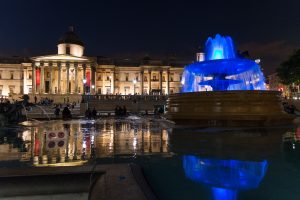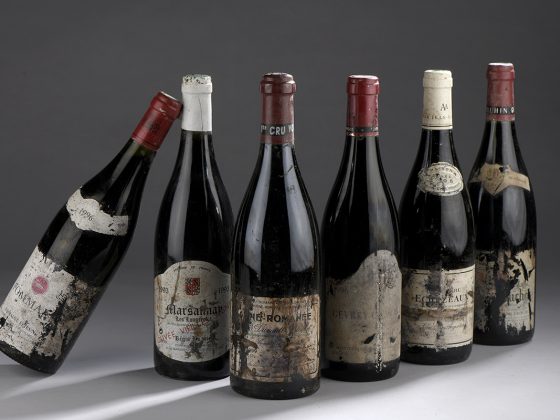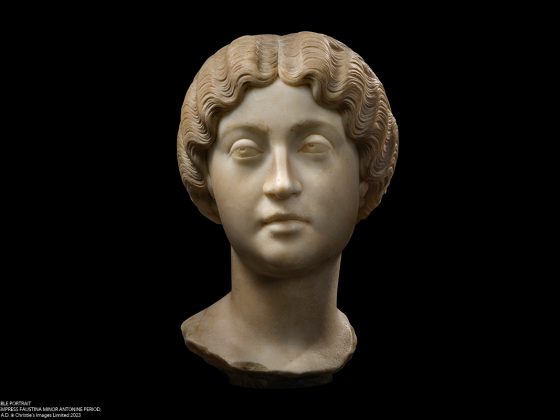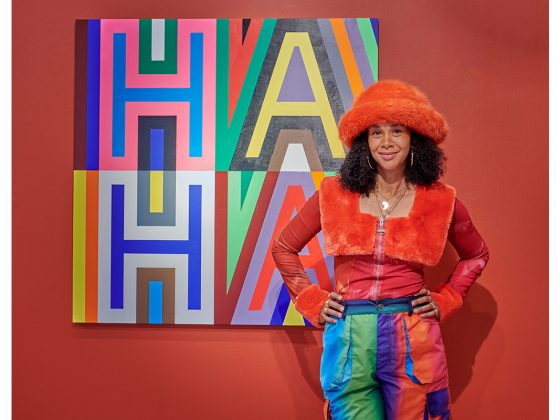Christie’s Impressionist and Modern Art department is pleased to present a sale dedicated to Modern Art, featuring nearly 200 works for a global estimate around 12 million euros.

signed, dated, numbered, with the stamp of the foundryman and inscribed ‘R. Bugatti 1908 Antwerp (2) Lost Wax A.A. HÉBRARD’ (on the terrace) bronze with a patina shaded with brown and black 40 x 69 x 24.5 cm. Designed circa 1908; this print was melted down in 1908 in an edition of 3 copies. ©Christie´s LTD
A stunning Rembrandt Bugatti bronze titled Lion de l’Atlas or Lion d’Afrique (ill.opposite, estimate €500.000-700.000), previously unknown to the general public, will be one of the highlights of this sale. The 1908 edition of the cast demonstrates the artist’s exceptional ability to accurately and vigorously depict his favourite subjects, which he tirelessly draws from the animal kingdom. Although wild beasts are a recurring theme in the sculptor’s work, the approach to this grandiose feline crystallises his stylistic development while reflecting, through a bold formal language, the dominant avant-garde tendencies of his era. He brilliantly exploited the lion’s thick mane in a highly stylised manner, characteristic of his major works from this period, during which he gradually emancipated himself from the freer impasto of his earlier style. Rembrandt Bugatti, just turning twenty-four years old when his founder and gallerist Adrien-Aurélien Hébrard produced and sold this bronze cast, asserted nevertheless a very distinctive personal style with this Lion of the Atlas and was already a virtuoso in the subject. Only two other copies of this Lion de l’Atlas , immediately sold to private collectors, came from the same edition – yet none of them have appeared at auction in the past forty years.

signed ‘van Dongen. (top right) oil on canvas 92 x 73 cm. Painted around 1955
©Christie´s LTD
A colourful painting by Kees van Dongen, Avenue du Bois de Boulogne , promises to be one of the key moments in this exceptional sale (ill. on the left, estimate €400.000- 600.000). The artist portrays, in bold and contrasting colours, the high-society Paris by which he was fascinated. Manifesting his taste for contrivances, Kees van Dongen paints here a sparkling model, personifying the frivolity of the Parisian women, who wears violently overstated makeup. Gazing directly at the viewer, her attitude appears as unsettling as it is provocative and suggestive – as if she was indifferent to the harsh lighting upon her. “His world was that of vitality, life and its inspirations: woman and her nudity, woman and her expressions, woman and her finery.” (quoted in Van Dongen , exh. cat., Fondation Pierre Gianadda, Martigny, 2002, p. 107)

signed ‘Marc Chagall’ (bottom right); signed ‘Chagall’ (on the reverse) oil, tempera and ink on canvas 55 x 46.1 cm. Painted in 1974 ©Christie´s LTD
An important painting by Marc Chagall will certainly dazzle international collectors. Entitled Violoniste dans le clair de lune orange à Vitebsk , this work (ill. on the right, estimate €300.000-500.000) marks one of the most prolific periods in a career of the painter and continues the tradition of expressing the internal world of Chagall’s imagination and emotions on canvas. Depicting an eerie scene in his beloved hometown of Vitebsk, Chagall sprinkles several of his favourite leitmotivs such as the vibrant flower bouquet, the married couple, the moon, the cockerel and the violinist himself. These elements, all referring to specific symbols in Chagall’s visual language, seem to magically float in a warm red- orange light in a celebration of the happiness, love and contentment found by the artist alongside Valentina Brodsky. Discussing his use of these symbolic leitmotivs, Chagall compared himself to a writer, explaining: ‘Poets always use the same letters, but out of them they constantly recreate different words’ (M. Chagall, quoted in J. Baal-Teshuva, Marc Chagall, Cologne & New York, 1998, p. 269).

Height: 78 cm. Conceived in 1941, realized in this size in 1965; this print was melted down in 1972 in an edition of 4 copies. ©Christie´s LTD
FOKUS ON BELGIAN ART
Christie’s Paris is honoured to present an exceptional collection from Belgium, illustrating the variety, abundance, dynamism and depth of Belgian art from the late 19th century to the early 20th century. Featuring paintings, works on paper, etchings and sculptures, this ensemble encompasses most of the prominent figures of the Belgian avant-garde art, from the undisputed master of Neo-Impressionism and Pointillism, Théo Van Rysselberghe, to Léon Spilliaert, the master of economy of line, subtlety and synthetic composition. James Ensor, a leading figure in Belgian art, holds a privileged place within the collection, with a large variety of some of his oil paintings and etchings, representative of his subjective and original art : from his seascapes to his still life works, via his satires on religion and the greedy bourgeoisie, and his representations of carnivals, masks, puppets and popular festivals…

signed, dated and inscribed ‘J. Ensor 1927 Portrait of my niece Alex DAVELUY’ (bottom right) oil and colored pencil on panel 69.7 x 60 cm. Painted in 1927 ©Christie´s LTD
The Portrait d’Alexandra Daveluy (ill. opposite, estimate €400.000-600.000) painted in 1927, is a testimony to the explosion of Ensor’s palette as he moved away from Impressionism and Neo-Impressionism in a whirlwind of blues, oranges and pinks. He portrayed here his niece, daughter of Taen Hee Tseu, a Chinese merchant from Germany. She is depicted as a woman in elegant attire, adorned with jewellery and sumptuous Oriental cloths which allude to Ensor’s pet name for her: the China girl. She also holds a wooden soldier on her knee, which appears to keep her in a distant childhood. It is as if, in the middle of this joyful disarray of objects, the artist wanted to preserve his niece – who was married at 15 – in a melancholy image to resist the changes wrought by the passage of time. This portrait ultimately conveys the painter’s private world, his favourite themes – where his love for the still life does battle with his fascination for masquerade – seeming to encircle and illuminate the young woman whom he loves just as much.















